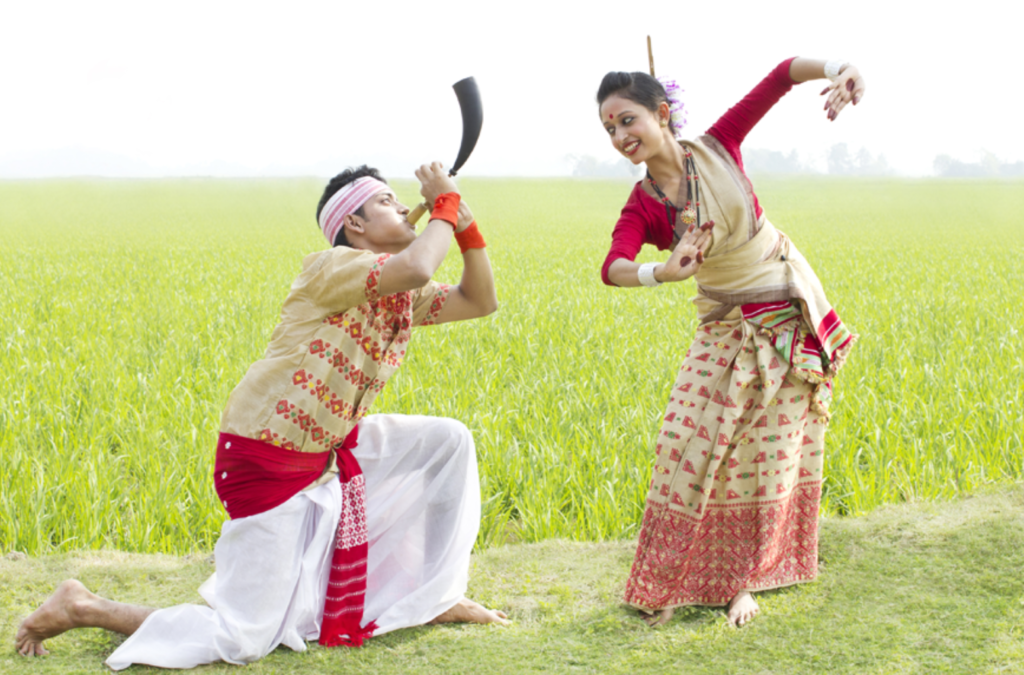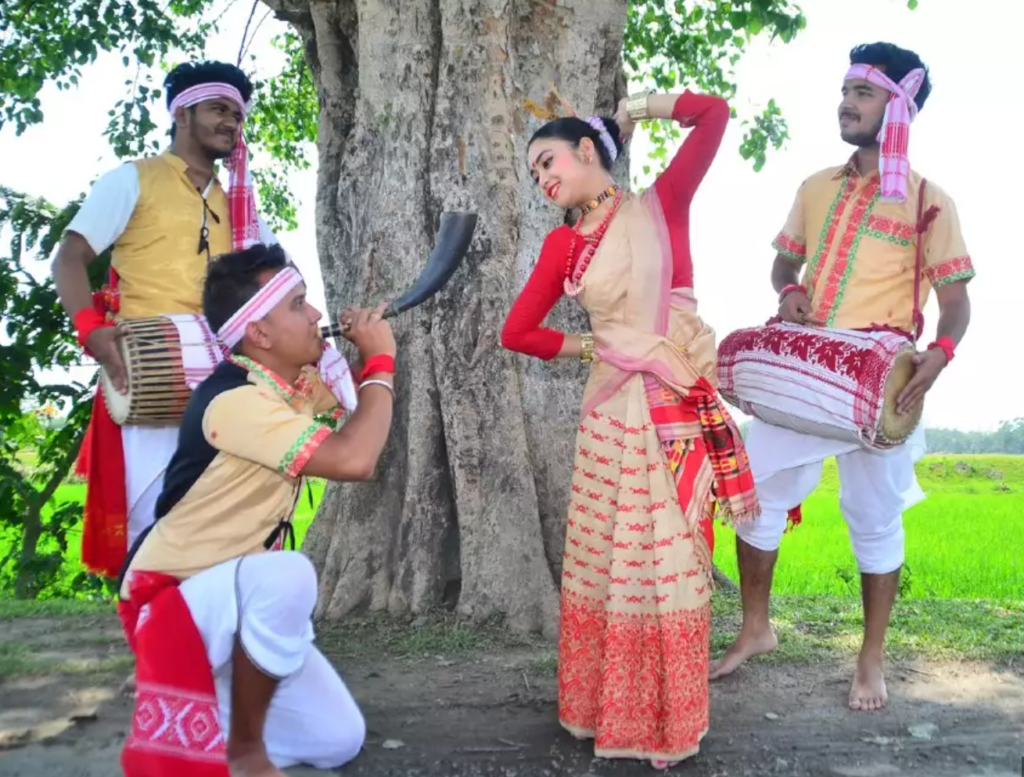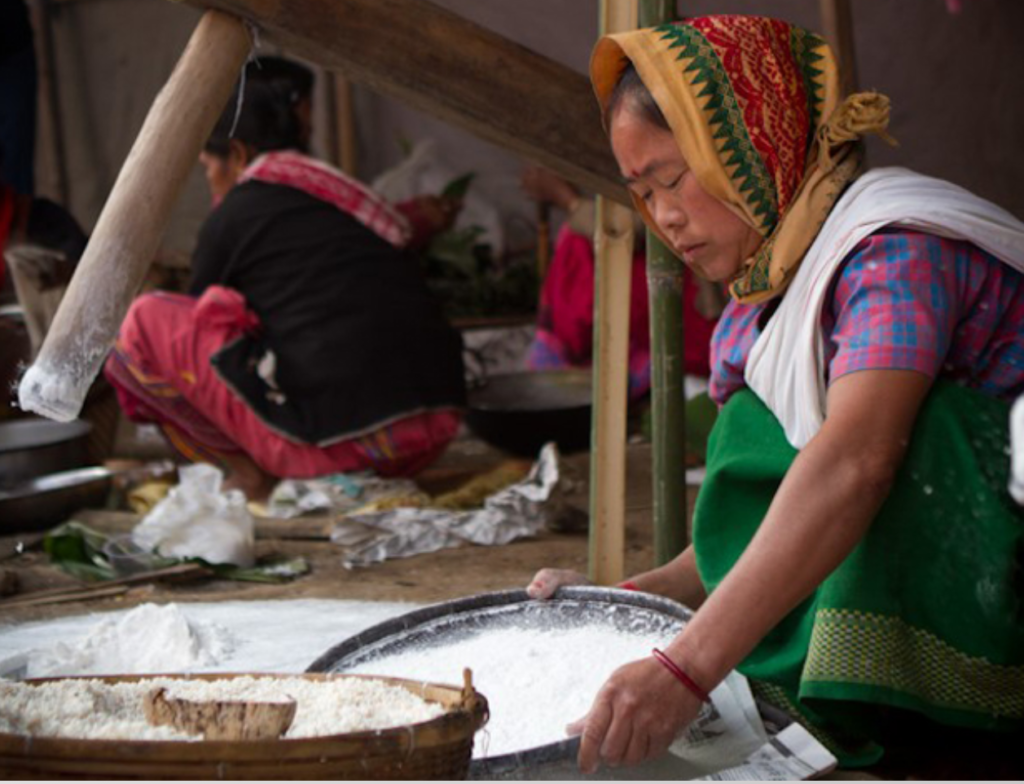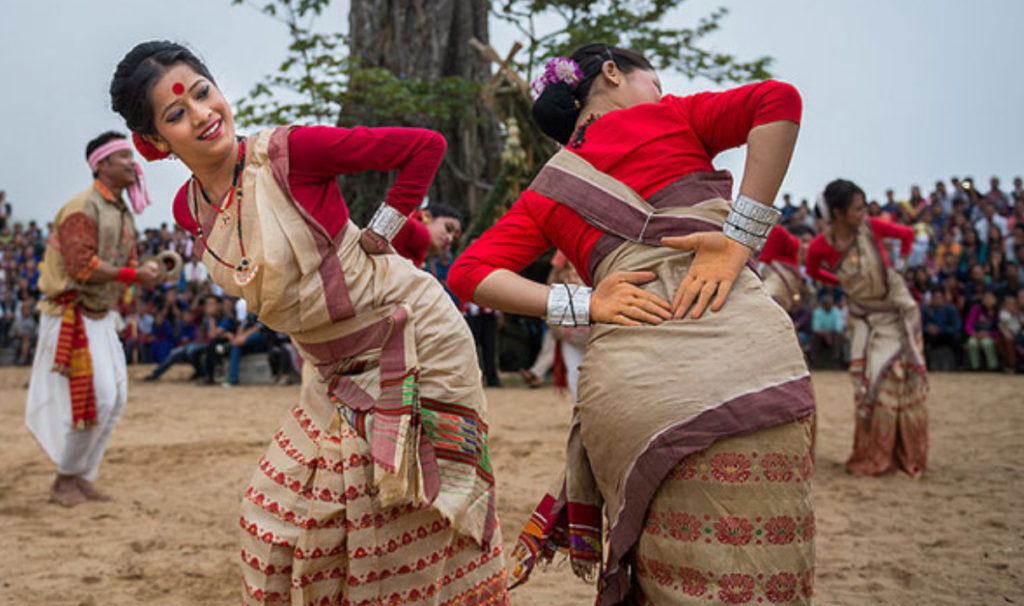Folk Dances of India: Bihu
Bihu is the indigenous folk dance part of the Assamese culture mainly performed in Assam, India. It is a traditional dance centered around the red colour theme, signifying joy, vigour and celebration.1 Celebrated by both men and women, this merry dance emphasizes the Assamese tradition’s cultural roots when the Ahom king Rudra Singha (1696-1714) invited Bihu dancers on the special occasion Rongali Bihu in 1694. This inherited tradition started generations ago when the local farmers celebrated the harvest and enjoyed this ceremonial dance. It symbolizes the beginning of the agricultural season in the Northern parts of India.2
The word ‘Bihu’ is derived from the Sanskrit word ‘Bishu’, which refers to asking blessings and prosperity from the Gods during harvest season.1 The songs and dance movements symbolize a deep interconnect between nature, culture and civilization of the region. This folk dance is performed at the three different Bihu dance festivals, namely Bohag Bihu, Kongali Bihu and Bhogali Bihu.3 It represents the integral relationship between agriculture and fertility; it embodies growth and celebrates bountiful harvests and abundance. It helps strengthen the sense of identity and belongingness among the Assamese people and reignites the spirit of sharing and trust.4 These traditions of songs and dances depict the feeling of support and love of the community with each other.
This traditional folk dance is manifested in numerous delicacies, snacks, and savouries prepared and relished by the locals, the quintessential among them being the Pithas.5 These are prepared way ahead of the occasion and are an excuse for the womenfolk to socialize and celebrate togetherness and bond. Some varieties used for Bhogali snacks are Bora-dhan, Malbhog-dhan, Beji-Dhan and Sokua-dhan. 5
In this traditional dance, women are dressed in chadormekhela, usually made of muga silk combined with traditional ornaments like Gaam kharu, dhul biri, jun biri, golpata etc. 1This outfit’s beauty is increased by adding a Kopou phool and red bindi, which makes the women look like an enchantress. The men wear a traditional dhoti and gamocha and embrace the traditional Indian culture with a piece of red cloth around their waist called tongali. 1
This folk dance not only symbolizes celebration but also youthful passion, joy and seduction. On the night of the festival, locals light a bonfire and spend their time singing and dancing around the Meji. The next day, in the early morning, the ashes of this bonfire are scattered around the farmland to increase fertility and production.3 Most performances include men playing musical instruments like drums, pipes and flutes while women dance with their hands above their hips at the back and palms facing outwards, swaying while slightly bending forward.
The spirit of harmony and togetherness plays a vital role in modern-day Assamese society and symbolizes the Assamese cultural identity. It has also gained immense international recognition as it was performed globally at the London Olympics in 2012. Being a spectacle of teamwork and collaboration, this harvest Bihu festival essentially resonates with the essence of Traditions, customs and rituals coming from a rural-agricultural setting.
_________________________________
Independent Project by Sezal Chug
Guide: Prof. Manohar Khushalani
__________________________________
-
1.encyclopedia W. Bihu dance. From Wikipedia, the free encyclopedia. https://en.wikipedia.org/wiki/Bihu_dance
-
2.India I. Bihu Dance. Bihu Festival. https://www.incredibleindia.org/content/incredible-india-v2/en/destinations/guwahati/bihu-dance.html
-
3.tourmyindia I. Bihu Dance Festival. Assam. https://www.tourmyindia.com/states/assam/bihu-dance-festival.html
-
4.India T. Bihu 2020. Types, significance, history, wishes, achievement and more. https://www.indiatoday.in/information/story/bihu-2020-types-significance-history-wishes-achievement-and-more-1666538-2020-04-13
-
5.Today I. Magh Bihu 2021. Date, significance, celebrations and all you need to know. https://www.indiatoday.in/information/story/magh-bihu-2021-date-significance-celebrations-and-all-you-need-to-know-1757400-2021-01-09



